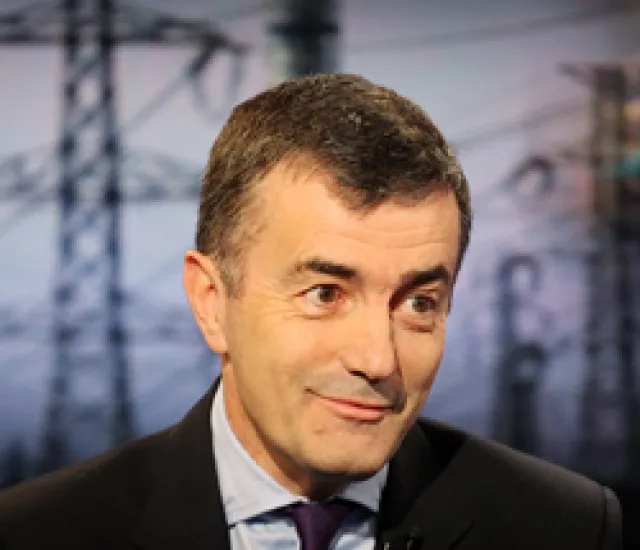After almost two years of talks, GDF Suez chief executive Gérard Mestrallet closed a merger with the U.K.’s International Power on February 3. Agreed upon last August, this $23.4 billion reverse takeover by the Paris-based energy producer and supplier was the seventh-largest announced M&A deal of 2010.
The merger is part of a resurgence in utility and energy transactions. Announced deal volumes hit $228.7 billion last year, Dealogic reports, up 52 percent from 2009. Gérard Lamarche, CFO of GDF Suez, says the two companies were partners as well as rivals; in 2006 they worked on the Al Hidd desalination plant in Bahrain. “We were fully convinced of the excellent strategic rationale of the combination,” he adds.
Itself the product of a 2008 merger between French utilities Gaz de France and Suez, GDF Suez had to clear British and European regulatory hurdles, fight off rival suitors and agree to a cash payment. The cross-border deal injected GDF Suez’s international assets (non-European countries, the U.K. and Turkey) and some debt into electricity generator International Power in exchange for 70 percent of the combined company’s stock. The remaining shareholders got a dividend of 92 pence per ordinary share, or £1.4 billion ($2.3 billion).
Now the world’s largest utility by revenue, International Power has a vast footprint and an impressive gross capacity of 66 gigawatts. It will gain access to Latin America, while GDF Suez will get a foothold in Australia. “It’s a marriage made in heaven for both companies,” says Lawson Steele, London-based head of the power team at Espírito Santo Investment Bank. “Combined, it’s better for both: a better fuel mix, a better mix of contracts and a better geographical mix.”
But the deal’s unusual structure speaks to a bigger plan — growing International Power’s business in emerging markets. Although most megamergers use a lot of debt, cash or both, the main payment method in this deal was assets. “One of the key things was to make sure that the financial structure of the merger was consistent with the future growth strategy of the group,” says Yoel Zaoui, head of investment banking for Europe, the Middle East and Africa at Goldman Sachs Group, one of GDF Suez’s lead advisers, and the subject of this month’s Rainmakers (see “The Road from Morocco,” page 17). “Hence the use of an asset contribution structure with limited cash.”
Credit Suisse calculates that International Power’s ratio of net debt to earnings before interest, taxes, depreciation and amortization fell from 3.8 to 3 after the deal. Other benefits are cheaper access to the capital markets and lower taxes. GDF Suez will lend £3.1 billion to International Power, which is refinancing £6.5 billion of its debt. For 2011, Credit Suisse puts the company’s enterprise multiple (enterprise value divided by ebitda) at 9.3, versus 5.1 for last year.
Mark Freshney, a utilities analyst at Credit Suisse’s London office, thinks International Power did well by the merger. But he doesn’t see it matching its performance three or four years ago, when posttax nominal returns were 9 to 11 percent per project. Sovereign wealth funds and other new competitors have driven down utilities’ pricing power.
Freshney also questions International Power’s exposure to Latin America. The region will account for 39 percent of 2011 ebitda, he reckons, compared with 28 percent for North America and 16 percent for Europe. Credit Suisse has raised another red flag by showing that posttax nominal returns for new energy projects are 6 to 9 percent, barely more than the weighted average cost of capital. Ajay Patel, a London-based utilities analyst at UBS, believes International Power must cut costs.
That’s up to Philip Cox and Mark Williamson, who remain as CEO and CFO, respectively, of International Power, while Mestrallet and Lamarche are still at their GDF Suez posts. As both companies focus on growth, the synergies of a new global utility may prove elusive.






